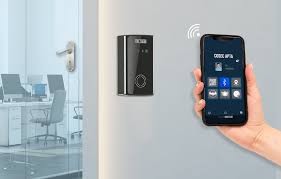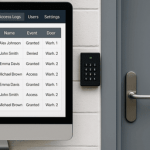
How Contactless Access Control Can Benefit Businesses
Contactless access control systems are transforming the way businesses manage security, offering a blend of convenience, efficiency, and enhanced protection. By eliminating the need for physical keys or touchpoints, these systems leverage technologies such as RFID, NFC, Bluetooth, and mobile credentials to allow users to access secure areas with a wave of a card, a smartphone, or even biometrics like facial recognition. Here’s how contactless access control can benefit businesses and some real-world use cases that illustrate these advantages.
1. Enhanced Security
- Reduced Risk of Unauthorized Access: Traditional keys can be lost, stolen, or duplicated, posing significant security risks. Contactless access control systems mitigate these risks by using encrypted credentials that are difficult to replicate. For example, a corporate office can issue mobile credentials that are tied to an employee's smartphone, ensuring that only the authorized person can gain entry.
- Audit Trails and Monitoring: These systems provide detailed logs of who accessed what and when. This feature is crucial for sensitive environments such as data centers, where it's essential to track access in real-time and maintain compliance with regulations like GDPR or HIPAA.
2. Improved Hygiene and Safety
- Touch-Free Environment: In the post-pandemic world, businesses are more conscious of the importance of hygiene. Contactless access control reduces the need for shared touchpoints like keypads or door handles, minimizing the spread of germs. In healthcare facilities, this can be particularly beneficial, as it reduces the risk of contamination.
- Emergency Responses: Contactless systems can be integrated with emergency protocols to facilitate swift evacuations or lockdowns. For instance, in a manufacturing plant, employees can quickly exit or secure the facility without needing to physically touch doors or security systems.
3. Operational Efficiency
- Streamlined Access Management: Managing physical keys can be time-consuming and prone to errors. With contactless systems, businesses can easily issue, revoke, or update access permissions remotely. A co-working space, for example, can grant temporary access to members via their smartphones, and automatically revoke it when their membership expires.
- Integration with Other Systems: Contactless access control can be integrated with other business systems, such as HR or visitor management systems. In a corporate setting, an employee’s access permissions can automatically adjust based on their role or location, and visitors can be pre-registered to receive temporary credentials.
4. Scalability and Flexibility
- Easily Scalable Solutions: Contactless access control systems are highly scalable, making them suitable for businesses of all sizes. Whether expanding an office or securing multiple locations, businesses can add new access points or users without overhauling the entire system. For example, a growing retail chain can quickly implement contactless access across new stores with minimal disruption.
- Customizable Access Levels: Businesses can customize access levels based on different criteria, such as time of day, specific areas within a facility, or the type of credential used. In a university setting, students might have access to academic buildings during specific hours, while faculty and staff have broader access based on their roles.
5. Cost Savings
- Reduced Need for Physical Security Personnel: By automating access control, businesses can reduce their reliance on physical security personnel, leading to significant cost savings. A tech company, for instance, might replace traditional security guards with a robust contactless system that manages entry points and monitors security in real-time.
- Lower Maintenance Costs: Contactless systems typically require less maintenance than traditional systems because they have fewer moving parts and are less prone to wear and tear. Over time, this can result in considerable savings, especially in large facilities such as airports or hospitals.
Real-World Examples
- Corporate Offices: A large financial institution implemented contactless access control in its headquarters to enhance security and streamline access for its employees. By using mobile credentials, employees can access their workspaces, meeting rooms, and secure areas without needing physical keys or badges.
- Healthcare Facilities: A hospital integrated contactless access control with its existing healthcare management system. Staff members use their ID badges equipped with NFC to access different departments, while visitors are granted temporary access via a QR code sent to their mobile devices. This system not only enhances security but also helps in maintaining strict hygiene protocols.
- Educational Institutions: A university deployed contactless access control across its campus, allowing students and staff to use their smartphones to enter dormitories, libraries, and labs. The system also integrates with the university's scheduling software, restricting access to certain areas based on class schedules.
Conclusion
Contactless access control offers businesses a modern, efficient, and secure way to manage access to their facilities. By embracing this technology, businesses can not only enhance their security and operational efficiency but also adapt to the evolving demands of hygiene, safety, and flexibility in today's world. Whether it's a small business looking to upgrade its security or a large enterprise seeking to streamline operations across multiple locations, contactless access control provides a scalable solution that delivers significant long-term benefits.
If you are interested in implementing a contactless access control system, contact us at sales@sspro.biz or explore our website at www.sspro.biz!


